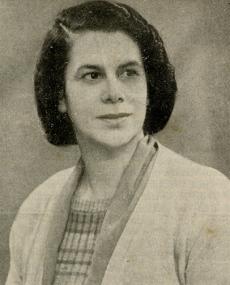
Photograph: Drum Magazine, Source: Africa Media Online
Zainunnisa “Cissie” Gool was born in Cape Town in 1897. One of South Africa's most popular and renowned female political leaders, her father was the prominent politician, Dr Abdullah Abdurahman, leader of the African Peoples Organisation (APO) which he had helped to form in 1902. Abdurahman was also the first black South African to be elected to the Cape Town City Council in 1904. Gool attended Trafalgar High School and later earned Bachelor's and Master's degrees from the University of Cape Town, then in 1962 a law degree which she had pursued part-time over years. In 1919 she married Abdul Hamid Gool and was thereafter always known as Cissie Gool.
In 1935, she joined with Communist Party members Johnny Gomas and James La Guma in founding the multiracial National Liberation League (NLL), and served as its first president. In 1938, an offshoot from the NNL involving African and Indian leftists created a larger organization called the Non-Europe United Front, and Gool was again elected as its president. In 1939, the NEUF staged a march in central Cape Town, estimated to invlove between 5,000 and 10,000 people protesting new segregation measures, some of which were shelved as a result. In the same year, in an overhaul of the Communist Party leadership, Gool became both a party member and a member of its Politburo. Gool was elected to the Cape Town City Council in 1938, and remained a member until her death despite being a "named" communist under the Suppression of Communism Act of 1950.